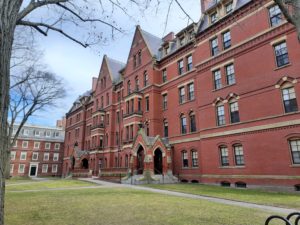The odd world of graduate education

Years ago I used to give teach summer class at the University of Trier as part of an exchange program. The region is beautiful with the small medieval villages and castles scattered along the Mosul River. The class was offered in English, and I enjoyed talking with my students over lunch. One question that my students always asked was how much tuition was at my university. In-state tuition at PSU is now $9,579 US dollars a year (which is not expensive for a state university in the United States) and it was perhaps seven or eight thousand at the time. But my students were shocked when I said this figure. The first time this topic came up they startled me by all shouting in protest at once. They couldn’t understand how Americans could accept that a university education could cost so much.
In Germany, as I understood it, whether or not universities charged tuition varied from state to state. But I think that the students told me that their tuition at the University of Trier was about $200 U.S. dollars a year in the period around 2008 to 2012. When they heard what my students were paying, some of them laughed so hard they cried. In Canada, citizens can attend a world-class university like McGill for a fraction of PSU’s tuition. For a Quebec resident tuition would be $2,725 Canadian a year. With fees, books and other charges they might pay five to seven thousand a year, apart from room and board. In Canada it’s perfectly reasonable for students to expect to be able to earn their tuition money through a summer job, and to help support themselves with a campus job over the year. Then there is the United States.
In the US, it is increasingly difficult to find a job working for an NGO or company if you don’t have an MA. I did a podcast episode in which I talked about career paths in International and Global Studies, in which I said that I wasn’t sure that MA programs were always worth the cost. At the end of the episode I interviewed my former student Chiara, who disagreed with me. She explained the challenges that she faced finding a good job without an MA. Over the last decade, MA programs have become increasingly important for anything above an entry level job, and perhaps for many of those jobs too.
For this reason, students are increasingly entering MA programs. Many of these programs are also ridiculously expensive, and students fund them with debt. Jordan Weissman has an article on this topic in Slate which is drawing a lot of attention: Master’s Degrees Are the Second Biggest Scam in Higher Education. In my opinion, the article lacks nuance because there are wide variety of costs and experiences available with MA programs. But Weissman’s main point that many students go into debt that they can never hope to recoup is an accurate reflection of many students’ experience. In the nineties I had my first teaching job in Joplin, Missouri. One of my colleagues told me that his student debt was greater than his mortgage. I was shocked then, but I think that this increasingly becoming a norm. I have spoken since with many students who simply cannot afford to attend an MA program, even though they are exceptionally talented.
I’ve blogged about this before, but twenty years ago when I wrote recommendation letters for students going to graduate schools they were almost entirely in the U.S. Now students increasingly are looking at MA programs in from Canada to New Zealand, because they tend to be cheaper. My international students are much less interested in U.S. graduate programs, not only because of cost, but also because of concerns about the United States. I think that international students also perceive visas to be more difficult to obtain in the United States than in Australia, Canada or Europe. Asian or Middle Eastern students also worry about how they will be welcomed while studying in the US. At my institution there was a dramatic drop in the number of Middle Eastern students after 9/11. Just anecdotally -I don’t have the figures to back this up,- this shift hasn’t changed over the last twenty years. I don’t think that my school is unique.
This change impacts US graduate students’ experience, which is now arguably less international than before. But since international students pay a premium to come to the United States, it also means that universities face increasing pressure to shift the tuition burden to domestic students. The cost of MA programs at a minority of institutions looks predatory. I want to stress that although high graduate tuition rates is a problem across the United States, many MA programs enable to students to find financially rewarding and fulfilling jobs. But I think that this overall trend will increasingly turn higher education into a class privilege unless something is done.
Harvard and Yale will always attract sufficient students. But as I talk with students -and hear about their worries as they balance their employment prospects against student debt- I believe that something has to change. Funding graduate education through student debt creates a strange political economy, in which universities and private lenders have incentives that don’t always match well with student needs. The total student debt burden in the US is 1.57 trillion. I would be curious to know how much of that debt is for master’s programs. And I have no doubt that this debt burden will continue to snowball into the future unless major changes are made at the federal level.
I don’t think that most of the jobs that my students are applying for actually require the skills developed by an MA. Instead, an MA has become -in my opinion- an easy way for employers to sort applicants, when there is so much demand for these jobs. What bothers me the most is not only that students are sometimes going into so much debt for these MA degrees, but also that I’m not sure that it should really be necessary for them to do so.




